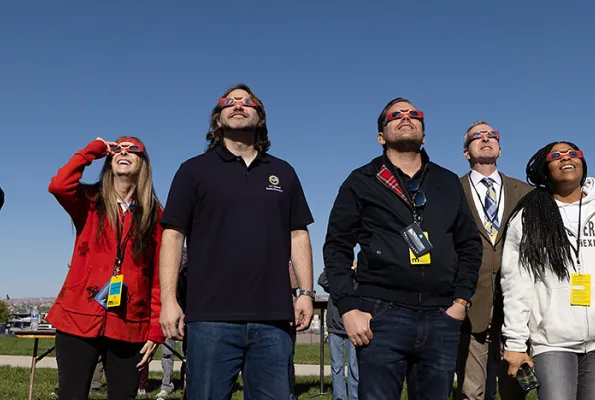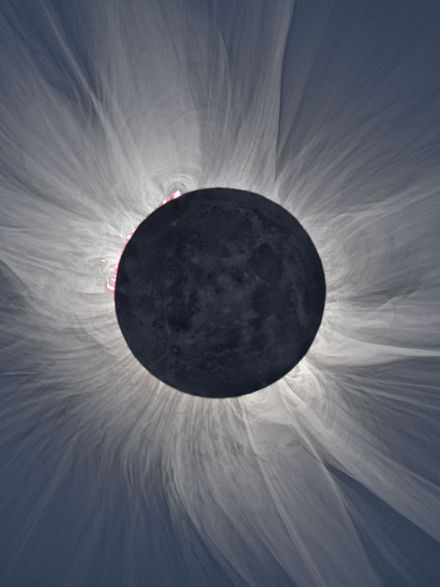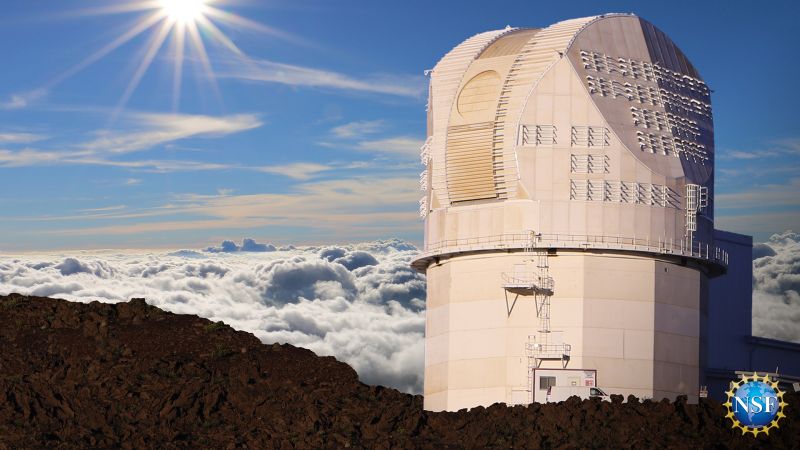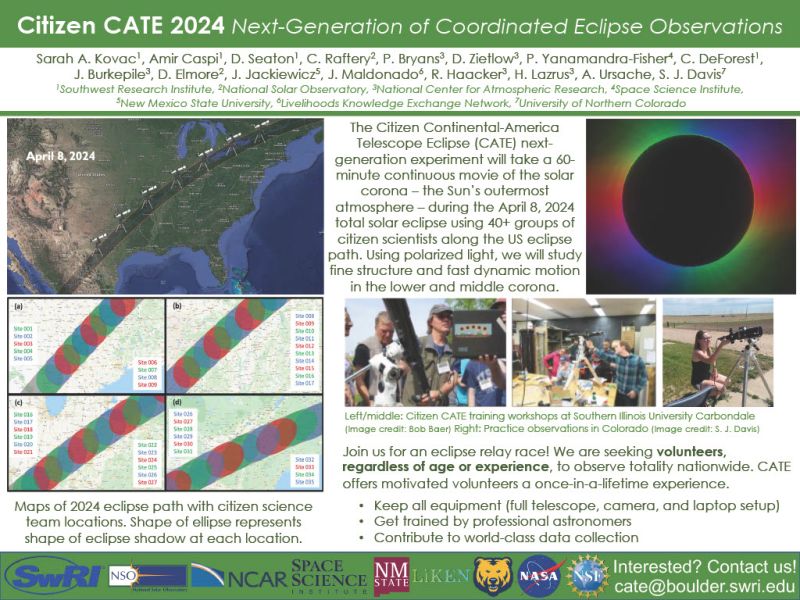
Solar eclipse offers researchers and enthusiasts unique opportunity
Researchers, amateur astronomers and eclipse enthusiasts are gearing up for a pair of solar eclipses that will occur over the continental United States in the next six months.
An annular solar eclipse, where the shadow of the moon blocks out most of surface of the sun and leaves a very bright ring around our star, will cross from Oregon to Texas Oct. 14. These events are rare, but just six months later, a total solar eclipse, where the moon completely blocks the surface of the sun, will be visible April 8 from Texas to Maine.
Along with the stunning visual of the eclipse itself, these periods where the moon blocks most of the light from the sun provide unique opportunities to researchers, enabling them to examine everything from the solar corona to impacts on planetary bodies, including Earth.
"Total solar eclipses are great for studying the atmosphere of the sun, or the corona, as we call it," said Carrie Black, a program officer in the U.S. National Science Foundation's Division of Astronomical Sciences. "They allow us to see the corona, which you wouldn't be able to see otherwise because it's so thin and not nearly as bright as the surface of the sun. But we live in the atmosphere of the sun. The planets all exist in the atmosphere of the sun. So being able to look at it and see what's happening there is unique to total solar eclipses."
Observing day and night
Black oversees operations of NSF's National Solar Observatory (NSO), a federally funded research and development center that focuses on the physics of the sun using a network of ground-based telescopes located around the globe.
One program, the Global Oscillation Network Group (GONG), has monitored solar activity continuously since the 1990s. The six telescopes collect daily measurements of activity on the surface of the sun across different wavelengths of the magnetic spectrum. The data streams capture detailed images of the sun's magnetism at its surface, as well as plasma suspended above the sun's surface. The near-real-time maps of the sun's magnetic field are used to predict the conditions of the solar wind and coronal mass ejections that may affect Earth.
NSO's newest telescope, NSF's Daniel K. Inouye Solar Telescope, is in its commissioning phase and will provide an even greater understanding of the sun. The world's largest, most powerful solar telescope, it has a 4-meter diameter mirror, more than twice the size of the next largest solar telescope and is located on the summit of Haleakala in Hawaii, 10,000 feet above sea level.
"It is so incredibly powerful it can look at what are tiny regions of the sun but still very large to us with incredibly high resolution," Black said. "This is really unique and it's going to get at some of the plasma dynamics that we haven't been able to study today. It's just going to be groundbreaking and also incredibly complementary to the other types of telescopes that we have looking at the sun."
The high-resolution images of the sun and measurements of the magnetic fields of solar phenomena the Inouye Solar Telescope captures will further researchers' understanding of the influence the sun has on space weather and its impacts on Earth. Space weather events caused by solar activity can disrupt or disable power grids, communication networks and other technology infrastructure. Observations and data from the telescope could lead to more accurate space weather prediction and improved preparedness.
"What we're going to get from these high-resolution images is the ability to compare with our models," Black said. "For a long time we've had simulations and models that theorize what happens on the surface of the sun at very small scales. But we haven't been able to take observations that were at those resolutions."
How everyone can contribute
Along with the opportunity to just view one of the great natural phenomena in the universe, there is an opportunity for everyone to contribute to research about the sun.
The Continental-America Telescopic Eclipse (Citizen CATE) Experiment intends to capture images of the solar corona during the April 2024 eclipse using a network of more than 40 telescopes operated by citizen scientists, high school groups and universities.
The volunteers will track the sun using 40 identical telescopes, software and instrument packages spaced along the 2,500-mile path of totality (the path at which the sun will be completely blocked by the moon). Each site will produce more than 1,000 images. As the moon's shadow passes from west to east, each telescope will be ready to take up the observation as the shadow appears on the horizon. The resulting dataset will consist of 90 minutes of continuous, high-resolution, rapid-cadence images detailing the sun's inner corona.
The long-duration sequence of images gathered by Citizen CATE will provide unique opportunities to study both static and dynamic features of the corona.
The best way to enjoy the upcoming eclipses
Black will be in Albuquerque on Oct. 14, and has some advice for the upcoming eclipse and the one in April 2024.
"You should not look at the sun ever without eye protection, because the sun is so bright it will burn your eyes," she said. There are many ways you can view the eclipse without potentially damaging your eyes.
But ultimately, "People should get out and see the eclipse. Go do it. Don't hide from it. Go enjoy," Black said. "Even if you're in a cloudy place, it's still worth being out when an eclipse happens. … It gets dark. Everything gets quiet. The mood just changes so quickly. It's just a really fascinating experience. And if you need any information on safety, please reach out. We have information for you."






